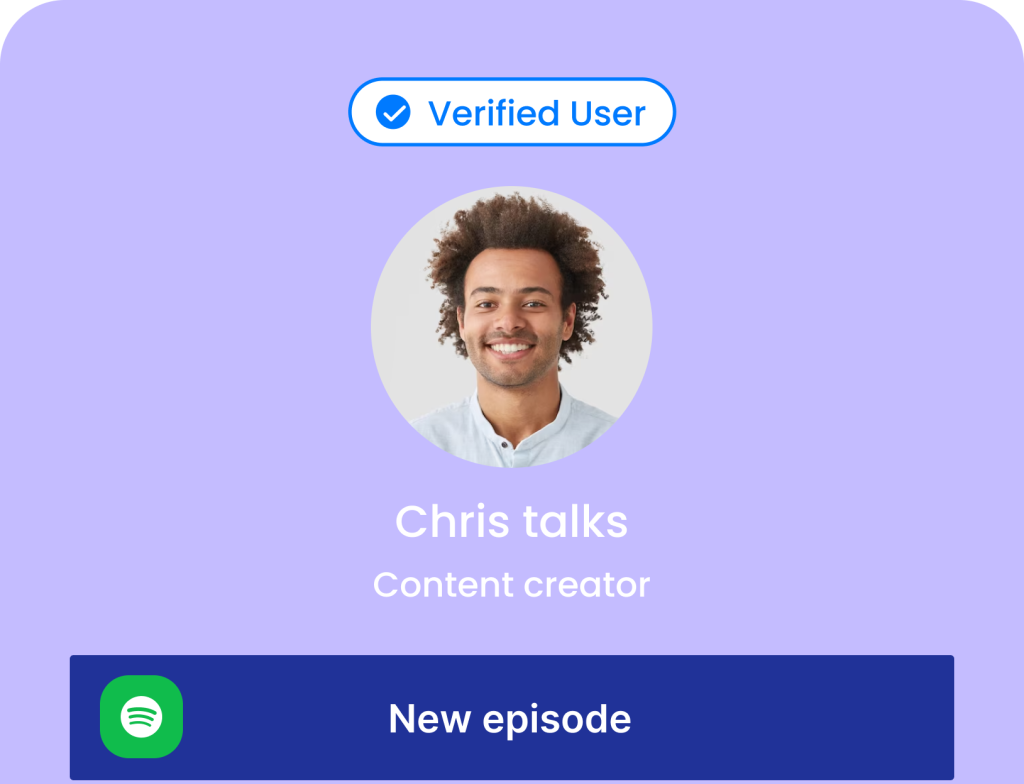Many creators leave money on the table because they don’t know how to negotiate brand deals properly. Brands often start with lower offers, hoping creators will accept without question. But if you understand your value and negotiate confidently, you can secure higher rates for brand deals and earn more money from collaborations.
The key to better brand deal rates is knowing what makes you valuable which includes your audience, engagement, and content quality. Many influencers make the mistake of accepting the first offer, underselling their work, or not justifying their pricing with real data. These errors can lead to underpayment and missed opportunities.
In this guide, you’ll learn proven strategies to negotiate higher rates for brand deals, avoid common mistakes, and position yourself as a premium creator. For creators looking to level up their negotiation skills, these tips will help you maximize your earnings and build long-term brand relationships.
Understanding your value as a creator
Before negotiating brand deals, you need to understand your worth. Many creators underestimate their value, leading to lower earnings. Knowing that brands don’t just pay for a post, they pay for access to your audience, influence, and content quality will give you a better understanding of the value you hold.
The more you understand what makes you valuable, the better you can negotiate higher rates.
Key factors that determine your rate
Brands look at several factors when deciding how much to pay you:
- Audience Size: A larger following can attract bigger deals, but micro-influencers with high engagement often earn more per follower.
- Engagement Rate: High likes, comments, and shares show that your audience trusts you, making you more valuable.
- Content Quality: Well-produced, creative content increases your marketability.
- Niche Authority: Being a trusted expert in a niche (e.g., fitness, beauty, tech) can justify premium rates.
How to negotiate higher rates for brand deals
Negotiating better brand deal rates is a skill every creator must master. Brands naturally want to pay less, but with the right approach, you can justify your value and secure higher compensation.
Here’s how to ensure you’re earning what you deserve from brand partnerships:
1. Do your research
Now, this is not a cliche but rather an assignment that should be done thoroughly. Before entering negotiations, research the brand thoroughly. Understand their values, target audience, and past influencer partnerships. This information helps you tailor your pitch and position yourself as the perfect fit.
Look at the brand’s previous collaborations. Check which creators they worked with, the type of content produced, and how much they might have paid. Tools like social media analytics platforms or networking with other influencers can give insight into their typical budgets.
Knowing how much a brand has spent in the past gives you an advantage when setting your rate. If a brand has previously paid high rates to creators, you can confidently ask for a similar or better deal. Proper research ensures you walk into negotiations prepared and with a strong case for your pricing.
2. Determine what kind of partnership you’re after
Not every brand deal is the same, and choosing the right partnership affects your long-term earnings. Some brands seek one-time promotions, while others prefer ongoing collaborations. Understanding what works best for you as a creator can help you negotiate smarter.
Long-term partnerships provide consistent income and stronger brand credibility. However, they may come with exclusivity clauses, limiting your ability to work with competitors. If a brand wants exclusivity, ensure you are compensated fairly.
Short-term collaborations, on the other hand, allow flexibility and multiple brand deals. However, they often require more frequent negotiations. Knowing your preferred partnership style before negotiating helps you structure deals that align with your goals and maximize your income.
3. Clearly outline and define scope of work
One of the most common mistakes creators make is failing to define the scope of work clearly. If you don’t set clear deliverables, brands may keep adding requests without increasing payment.
Specify the type and number of content pieces (e.g., Instagram posts, YouTube videos, or TikTok stories). Outline posting schedules, caption requirements, and any additional tasks like responding to comments or attending events.
Creators also have to be aware and cautious of requests that seem simple but require more work, like multiple revisions or extensive creative input. If a brand asks for extra work, negotiate a higher rate or adjust the deliverables.
Upselling is a great strategy to use in this regard. Creators should be willing to offer upgraded packages that include extra content, additional platforms, or extended promotion for the right compensation. Defining clear terms prevents misunderstandings and ensures fair payment for your efforts.
4. Start with a higher ask
Brands often offer less than they are willing to pay. If you accept the first offer, you might be leaving money on the table. Always start with a higher rate than what you are willing to settle for.
Many brands expect creators to negotiate. If you quote a number slightly above your ideal rate, you have room to adjust while still securing a fair deal. Justify your price with data by mentioning your engagement rate, audience trust, and past successful collaborations.
In the process of negotiating, creators should avoid underselling themselves. If a brand insists on a lower price, highlight the unique value you bring. Show how working with you can generate more engagement, conversions, and brand visibility. Negotiating confidently ensures you maximize your brand deal rates and earn more money.
5. Offer tiered packages
A valuable strategy in a creator negotiating arsenal is to have tiered packages. Instead of presenting a single price, offer different pricing options. This gives brands flexibility while allowing you to upsell your services.
For example, you can create three tiers:
- Basic: One social media post.
- Standard: Multiple posts across different platforms.
- Premium: A full campaign including video content, behind-the-scenes footage, and exclusivity.
Brands are more likely to choose a higher package when presented with options. You can also offer add-ons like priority posting, additional content formats, or extended promotion. Tiered pricing helps you secure better deals and increase your overall earnings.
6. Leverage social proof
Brands want proof that their investment will pay off. Show them real results from past collaborations to justify your rates.
Provide examples of previous partnerships where your content led to increased sales, engagement, or brand awareness. If possible, include metrics like conversion rates, website traffic, or social media growth.
Testimonials from brands you’ve worked with also add credibility. If a past campaign was highly successful, use it as a case study to negotiate higher rates. Demonstrating your impact makes it easier to demand better compensation.
7. Use scarcity and urgency
Brands value exclusivity and access to high-demand creators. Position yourself as a creator with limited availability. Mention that your content calendar fills up quickly and that you’re selective with collaborations. This creates urgency, making brands more willing to meet your pricing demands.
Another approach is to offer limited-time deals. If a brand is hesitant, let them know your rates may increase in the future. Scarcity and urgency are powerful tools for securing higher earnings in brand deals.
8. Discuss terms of agreement
Payment is just one part of brand deal negotiations. You also need to understand the legal terms that come with it.
- Exclusivity clauses may prevent you from working with competitors for months. Ensure you are compensated for this limitation.
- Usage rights determine how the brand can use your content. Some brands want full rights, allowing them to use your content indefinitely. If so, negotiate a higher fee.
- Whitelisting allows brands to run paid ads using your content. This increases their reach using your audience. If a brand wants whitelisting rights, request additional payment.
Understanding these terms ensures you get fair compensation beyond the initial deal.
9. Talk about brand safety and compliance stipulations
Some brands have strict guidelines that creators must follow. These may include restrictions on topics, language, or content style.
Make sure you understand any brand safety policies before agreeing to a deal. Some companies require legal approvals before posting, which can affect your creative freedom. Others may have strict deadlines that impact your content schedule.
Discussing these factors upfront ensures smooth collaboration while protecting your brand identity.
10. Don’t just ask for money
While payment is important, non-monetary compensation can add value to a deal. Instead of only asking for money, consider requesting additional benefits such as:
- Free products – Useful if they align with your content.
- Event invitations – Great for networking and exposure.
- Affiliate partnerships – Long-term earning potential.
- Equity deals – Some brands offer shares instead of cash.
Exploring these options can help you earn more money beyond a one-time payment.
11. Talk about payment terms
Payment terms dictate when and how you get paid. Ensure this is clearly defined before signing any contract.
Common payment terms include:
- Net-30, Net-60, or Net-90 – Payment is made 30, 60, or 90 days after content delivery.
- Upfront Payment – Some or all of the fee is paid before work begins.
- Milestone Payments – Payment is split into phases based on content completion.
To protect yourself, discuss late fees for delayed payments and rush fees for urgent content. Being clear about payment terms ensures smooth transactions and avoids payment issues.
12. Be willing to walk away
Not every brand deal is worth taking. If a brand offers too little or has unreasonable demands, it’s okay to decline.
Know your minimum rate and stick to it. If a brand refuses to meet your terms, politely walk away. Often, this approach makes brands reconsider and return with a better offer.
Negotiating from a position of confidence prevents you from accepting undervalued deals.
How to handle common brand pushbacks
Make no mistake, brands are out to make profit. This means they will attempt to cut costs by all means necessary. With this backdrop, creators must know that all negotiations won’t go as smoothly as you want. You are bound to get some pushbacks.
However, knowing how to handle these pushbacks can further endear you to the brand, granting you headway where others fall short. To successfully navigate brand pushbacks, you must understand how to give strategic answers that show you value the brand while also protecting your own interest.
Below are some common push backs and how you can handle them professionally:
“We don’t have the budget”
Brands often claim they lack the budget, but that doesn’t mean you should lower your pricing immediately. Instead, ask what their budget actually is. You might find they can allocate more than they initially say. If their budget is genuinely tight, offer flexible solutions like reducing deliverables, extending the timeline, or providing a trial collaboration before a bigger deal.
Creators can also propose non-monetary perks, such as product bundles, affiliate commissions, or long-term partnerships that ensure consistent income. When you position yourself as a strategic partner rather than just a one-time creator, you can still earn more money without undervaluing your work.
“Other creators are charging less”
Comparing your rates to others is a common tactic brands use to negotiate lower prices. Instead of competing on price, focus on the unique value you bring. Highlight your engagement rate, audience trust, previous campaign successes, or niche expertise.
Share case studies or testimonials proving your impact on brand sales or awareness. Explain that creator pricing isn’t just about the cheapest option but about ROI. A creator with high engagement and conversions is more valuable than one who simply offers a low rate. Stand firm in your worth and justify why your brand deal rates reflect the value you provide.
“We want more deliverables for the same price”
Brands may push for additional content without increasing payment, but it’s crucial to set clear boundaries. More deliverables mean more work, so it’s only fair to charge accordingly. If they insist, present a tiered pricing model showing the cost difference between basic and premium packages.
Explain how extra content impacts your time, quality, and overall effectiveness. You can also offer a discount on bulk content but ensure the price still reflects the value of your effort. When creators stand firm on a fair rate, they protect their time, maintain quality, and ultimately earn more money in every brand deal.
Tips for successfully landing higher paying brand deals
1. Never go into a negotiation unprepared
Walking into a brand deal discussion without preparation can cost you valuable opportunities. Research the brand’s previous campaigns, target audience, and marketing goals. Understand your own value, know your engagement rate, audience demographics, and past campaign results.
Having data-backed insights strengthens your case when discussing pricing. Preparation not only boosts your confidence but also helps you position yourself as a knowledgeable and strategic partner, increasing your chances of earning more money.
2. Create a clear case for your value
Brands need a reason to invest in you, so make it easy for them to see your worth. Prepare a compelling pitch that outlines what makes you unique. Showcase your audience loyalty, past campaign successes, and the quality of your content. Provide clear examples of how your work has helped brands grow. A well-structured case gives brands confidence in your ability to deliver results, making them more likely to offer higher brand deal rates.
3. Focus on value for brands
Instead of just asking for higher pay, show brands how working with you benefits them. Highlight how your content drives engagement, builds trust, or increases sales. Explain why your audience aligns perfectly with their product.
Demonstrating your value in measurable ways shifts the conversation from cost to return on investment. Brands are more willing to invest in influencer pricing when they see the potential for strong results.
4. Play to the brand’s strengths
Every brand has unique strengths be it a loyal customer base, innovative products, or a strong online presence. Align your pitch with these strengths by showing how your content can amplify them.
If a brand excels in storytelling, offer creative content ideas that enhance their narrative. If they want to boost conversions, emphasize your ability to drive sales. This tailored approach makes it easier for brands to justify paying higher brand deal rates.
5. Leverage performance incentives
Sometimes, brands hesitate to commit to higher upfront payments. Instead of lowering your rates, offer performance-based incentives. This could include commission-based bonuses for hitting engagement targets or additional exposure in exchange for higher compensation.
Structuring deals this way reassures brands they are making a smart investment while giving you an opportunity to earn more money. When done right, incentives can turn a hesitant brand into a long-term partner.
6. Don’t be overly aggressive
Confidence is key in negotiations, but being too pushy can backfire. Brands appreciate creators who know their worth but also understand collaboration. Instead of demanding higher rates outright, use data, storytelling, and relationship-building to justify your rates.
Show willingness to find a middle ground without underselling yourself. A professional, strategic approach makes brands more likely to see you as a valuable partner rather than just another influencer.
Key takeaways
As a creator, you have the power to shape your earnings. However, negotiating higher brand deal rates isn’t just about asking for more money. Creators must bring their worth to the table and prove that they offer value that the brand needs.
Researching brands, setting clear deliverables, and offering tiered pricing can position you as a premium creator. Leveraging social proof, urgency, and strong payment terms ensures you don’t just earn more money but also protect your work. Handling common brand pushbacks with confidence helps maintain fair creator rates without undervaluing your efforts.
The next time you negotiate, stand firm, communicate your value, and don’t be afraid to walk away from bad deals.








